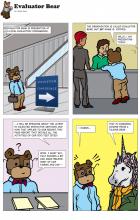Over our years of conducting and completing consulting contracts, the Improve Group recognized a pattern that led to enormous project success. This discovery was that in each of the projects where we had invested a significant amount of time in the beginning stages to learn about systems, data, and the people we would be working with, we were able to ultimately identify deeper insights and help organizations understand issues more thoroughly.
Recent changes to programs and policies has extended the age in which youth are eligible for foster care to 24 instead of 18. In the Improve Group’s work with the Minnesota Department of Human Services (MN DHS) Child Safety and Permanency Division, we are managing a federally-mandated longitudinal study of youth who have experienced foster care between the ages of 17 and 21.
 At the Improve Group, collaboration is one of our core company values. We enjoy working with and learning from others, and see ourselves as part of our clients’ team. Through one of our long-standing projects, the Minnesota Department of Human Services (DHS) Waiver Review Initiative, we have the opportunity to collaborate with our clients almost every day.
At the Improve Group, collaboration is one of our core company values. We enjoy working with and learning from others, and see ourselves as part of our clients’ team. Through one of our long-standing projects, the Minnesota Department of Human Services (DHS) Waiver Review Initiative, we have the opportunity to collaborate with our clients almost every day.
 Person-centered thinking and planning empowers individuals who need regular support, such as people with disabilities or those who are aging, to increase their own self-determination and independence. The Learning Community for Person-Centered Practices recently trained people who serve people with disabilities around new planning and services approaches.
Person-centered thinking and planning empowers individuals who need regular support, such as people with disabilities or those who are aging, to increase their own self-determination and independence. The Learning Community for Person-Centered Practices recently trained people who serve people with disabilities around new planning and services approaches.
 The Statewide Health Improvement Program (SHIP) uses grants to local communities to reduce the burdens of chronic diseases associated with tobacco use and obesity through policy, system and environmental (PSE) changes. Each community collaborates with schools, worksites, service providers and health care organizations.
The Statewide Health Improvement Program (SHIP) uses grants to local communities to reduce the burdens of chronic diseases associated with tobacco use and obesity through policy, system and environmental (PSE) changes. Each community collaborates with schools, worksites, service providers and health care organizations.
 The Improve Group values what has become a long-term relationship working with the Minnesota Department of Human Services (DHS) for the Home and Community Based-Services (HCBS) Waiver Review Initiative.
The Improve Group values what has become a long-term relationship working with the Minnesota Department of Human Services (DHS) for the Home and Community Based-Services (HCBS) Waiver Review Initiative.
Whoever thinks data nerds are no fun clearly needs to work with the Improve Group. In the past six months we have had the wonderful opportunity to partner with the Hennepin County Library system to pilot some tools among youth and adult patrons. What makes this project so special is that in negotiating the challenges of drop-in patrons, we get to think through and test some of the more innovative approaches to data collection.
We have so far tested the following different tools (adapted):
Special education services are often as customized as possible for the students who need them. In fact, many schools now collaborate with families to create individualized education programs (IEPs) for each student who is eligible for special education services.
 Recently, I attended a focus group training facilitated by Dr. Richard Krueger and Dr. Mary Anne Casey of the U of MN School of Public Health.
Recently, I attended a focus group training facilitated by Dr. Richard Krueger and Dr. Mary Anne Casey of the U of MN School of Public Health.








